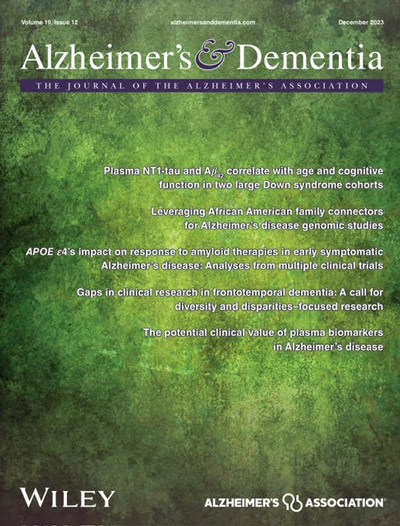Physical and biopsychosocial frailty, cognitive phenotypes, and plasma biomarkers for Alzheimer's disease in Chinese older adults: A population-based study
Abstract
INTRODUCTION
We sought to examine the associations of physical frailty (PF) and biopsychological frailty (BF) with dementia and mild cognitive impairment (MCI) among Chinese older adults and further to explore neuropathological mechanisms underlying the associations.
METHODS
This population-based cross-sectional study included 5149 participants in the MIND-China baseline examination (2018); of these, we measured plasma amyloid-β (Aβ), neurofilament light chain (NfL), and total tau in 1371 persons and phosphorylated tau 217 (p-tau217) and glial fibrillary acidic protein (GFAP) in 3387 persons.
RESULTS
PF and BF were significantly associated with increased likelihoods of dementia, Alzheimer's disease (AD), vascular dementia (VaD), and MCI. PF was significantly correlated with increased plasma p-tau217, GFAP, and NfL, and reduced Aβ42/Aβ40 ratio; BF was related to higher plasma total tau and NfL and lower Aβ42/Aβ40 ratio. PF in combination with demographics performed excellent in differentiating dementia from non-dementia (area under the curve [AUC] = 0.83).
DISCUSSION
PF and BF are potential clinical biomarkers for dementia and MCI in older adults. Alzheimer's pathology, neuroinflammation, and neurodegeneration may underlie their associations.
Highlights
-
Physical (PF) and biopsychosocial frailty (BF) were strongly associated with dementia and mild cognitive impairment (MCI) in rural Chinese older adults.
-
Frailty, especially PF, was associated with increased plasma phosphorylated tau 217 (p-tau217), glial fibrillary acidic protein (GFAP), and neurofilament light chain (NfL) and a reduced plasma amyloid-β (Aβ)42/Aβ40 ratio.
-
Alzheimer's pathology, neuroinflammation, and neurodegeneration may underlie the associations of frailty with dementia.
-
PF, in combination with demographic factors, performed excellent (area under the curve [AUC] = 0.83) in differentiating dementia from non-dementia in rural older adults.

 求助内容:
求助内容: 应助结果提醒方式:
应助结果提醒方式:


